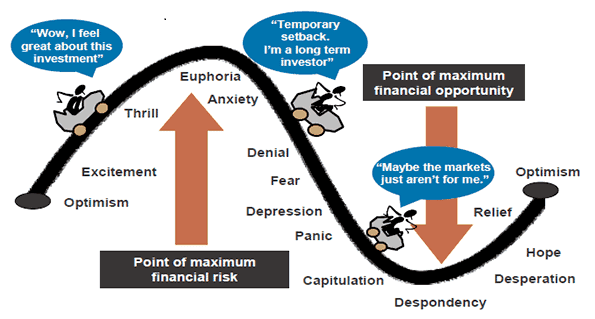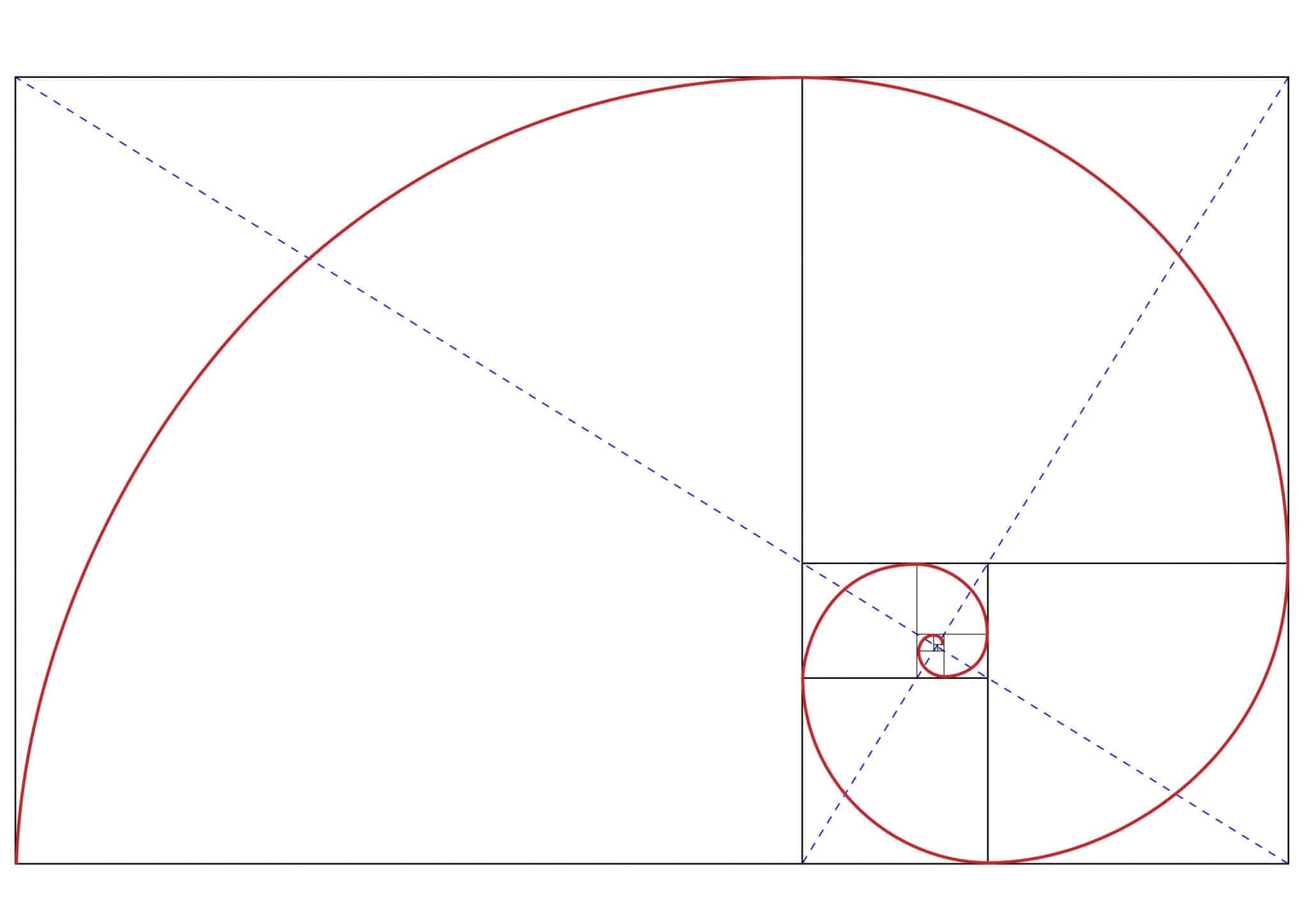Today, I will share with you one of the first trading strategies I had massive success with early in my trading career. I also want to give you the indicator I use that makes implementing this a snap.
I can’t take credit for the development of this strategy, but I spoke with the developer and got permission to share it with my users.
You can click here to download the indicator
and a desktop PDF version of this entire Strategy
So, here it is!
The best part of this trading strategy is it takes very little time to implement and almost zero time staring at charts, waiting and watching. At the end of this article, after I explain all the details, I will also include a video that will walk you through a live trade that netted around $2500 of profit.
Some of the examples are dated, but the information is no less powerful today than it was when I originally put this together.
The Truth Behind Most Losses

When it comes to any trading strategy, emotions are the number one killer of profit. Most traders are controlled by fear and greed, and that is exactly what this strategy will help you combat.
How many times have you exited a trade only to come back an hour later and see it has gone another 50, 75, or even 100 pips in your direction?
Unfortunately, you exited the trade because you were AFRAID of losing what profit you had made.
On the other hand, how many times have you found yourself in a losing trade and were more than willing to allow it to continue to run against you?
So, what I am about to share with you was designed to have you cutting your losses short while taking some quick profits early on.
This satisfies the scalper in you and positions you for bigger profits in the long run with the remainder of your trade, should the market keep going in your favor.
So let’s get Started!
When implementing this trading strategy, you can use an entry filter which I will provide below.
Alternatively, you can enter the market as you normally would, using trend line breaks, support and resistance breaks, reversal signals, or any number of different entry styles. Then. just use this to manage your trades once you have entered. It really is quite versatile.
Constructing the Tunnel
First, create a 1 hour chart on whatever currency pairs interests you. Overlay these 3 indicators:
1) a 169 period [1 hour] EMA [exponential moving average],
2) a 144 period [1 hour] EMA, and finally
3) a 12 period [1hour] EMA.
The 144 and 169 EMAs create what we call the “tunnel”. The 12 period EMA is an extremely valuable filter that you will want to have there all the time. I will talk more about this in the filter section.
Identifying Profit Targets
Memorize or write down and keep next to your trading screen the following Fibonacci number sequence: 1, 1, 2, 3, 5, 8, 13, 21, 34, 55, 89, 144, 233, 377. For trading purposes, the numbers of interest are 55, 89, 144, 233, and 377.

Click here to Download Our Tunnel Indicator And It
Will Put All The Levels On The Screen For You
Basic Trade Rules
Wait for the market to come into the area of the “tunnel”. When it breaks ABOVE the upper tunnel boundary, you go long. When it breaks BELOW the lower tunnel boundary, you go short.
Stops are placed 20 to 30 pips on the other side of the tunnel or above/below an obvious support or resistance point.
As the market trades in your direction, you take partial profits at the successive fib numbers respectively, with the final portion of your position left on until one of the following conditions occur: 1) market hits the last fib number [377 pips] from the EMAs, or 2) the market eventually comes back to the tunnel and violates the other side.

Trade Example
GBP/USD is trading at 1.8500. The EMAs are as follows: 144- 1.8494, 169- 1.8512. The market breaks 1.8494, and you sell at 1.8492. Your stop and reverse is now at 1.8512. Over the following hours, the market starts to go down after retesting the tunnel. 4hrs after you put position on, cable is at 1.8446. You can use for computation purposes either tunnel boundary or the median of the tunnel. Ema’s are still the same, so if you use the median, 55 from 1.8503 is 1.8448. You should have taken part of the position off at 1.8448 (55 Fib). Market moves sideways for about 5.5 hours. You are now looking for price to be break below the 55 fib level from the EMAs. After 6 hours, cable is at 1.8410 and the median of ema’s is 1.8410 [1.8400 – 1.8420]. You should be out of another portion of your trade (89 Fib); once the market has broken below the55 level is safe to move your stop to break even. You do not have to but to conserve profit it is a good idea. Many time the market will retest the tunnel which will give you another opportunity to enter short if you get stopped out. After moving sideways for about 2.5 hours the market continues down to the next level where you will remove another lot and place your stop above the 89 level by 20 points. Once again this is your choice in this case we were stopped out with plenty of profit. This is a fairly typical example.
If you were to just stick to this basic model, your account would grow very well over time. Las Vegas was built with far fewer percentages in the casino’s favor.
In case you haven’t figured it out, this model cuts your losses very short. By definition, you can’t lose very much on a single trade from your initial entry position. On the other side, you take some quick profits at the 55 level which satisfies the scalper in you, and you have positioned yourself for bigger profits in the long run should the market keep going in your favor. By definition, you are letting profits run.
The Achilles heel of this model is when the market chops around the tunnel and gets you in and out multiple times for small losses. This is where a solid understanding of trend line analysis along with Pivot Points and Fibonacci levels proves to be very valuable. Using these levels for entries will provide you with a much better entry point and will limit your risk. Here is that same example but entering at the breakout of an intermediate trend line You may want to take profit at the tunnel to cover the trade in case the market bounces off of the tunnel which is very common. Your stop is just above the trend line giving you a 15 pip stop.

That’s it. This is the model, fairly simple in its design, and easy to remember. It has everything a trader wants in a model, except the quick 2 pip scalps, which you can’t do anyway. It cuts losses short, and lets profits run. Yet for its design simplicity, the thought behind is more complex. So, let’s now discuss that.
But first, make sure you Click here to download the indicator
and a desktop PDF version of this entire Strategy
THEORETICALS OR EVERYTHING HAS A REASON
Why 1 hour charts?
Smaller charting periods lead to more false positives, which translates into more losses. By the time you get to the five-minute chart, the bank has you on a string and your account is going to go to them. Longer term charts, like daily and weekly produce too much slippage in market price for the final portions of the position.
In the fall of 2004, when GBP/USD went 20 candles up to 1.95, the daily EMAs were 5 to 7 bars behind. For me, this is too much to give back on a long position, especially when your first profits came at the 55 and 89 fib lines.
Two hour and four hour charts are roughly analogous, but I prefer the 1 hour chart for its simplicity, and sometimes it’s tough to see how a market trades in a 4-hour period.
Why 144 and 169 1 hour EMAs?
It’s all about momentum over the short to medium term. Lower EMAs produce momentum signals that give trading signals that are to short-term to
trade profitably. In other words, the dreaded whip-saw. It may go in your direction for 3 minutes and 6 pips, but then, it rolls over and crushes you. Higher EMAs produce momentum signals that are too long-term and as a result you get 2 trading signals every 3 years. This isn’t very good either because while you are waiting, the market is going candles in a direction without your participation.
There is also another reason: W. D. Gann
 Gann was big on squares, square roots and the inter-relationship between price and time. I am not a Gann disciple, but you can’t just dismiss his work as junk. After all, the guy made $50 million between 1910 – 1950. He deserves respect, even if you disagree with his methods.
Gann was big on squares, square roots and the inter-relationship between price and time. I am not a Gann disciple, but you can’t just dismiss his work as junk. After all, the guy made $50 million between 1910 – 1950. He deserves respect, even if you disagree with his methods.
So, 144 is the only fib number that has a whole number square root [12]. The closet fib number to this square root is 13. The square of 13 is 169. The tunnel is now created.
But, the proof is in the pudding. In a trending currency market (which is what it does most of the time over the long run), retracements are where you can re-establish profitable positions. Go back and look on the 1 hour chart and see where the retracement stops and you will need to know nothing more about Gann or numerology, astrology, or anything else. They stop very close, if not exactly on the 144 and 169 1 hour EMA, that is, the tunnel.
The Fib Numbers
Everyone should know that all moving averages are lagging indicators. It makes no difference the type, they all lag. Only after the fact can they tell you the market has turned. Even though that is valuable information and is acted upon by taking a position, it isn’t going to help you much in getting the best profit potential out of your trade. If you use them exclusively to get out, you will discover 2 things: 1) you get chopped when you had a profitable trade at one point, and/or 2) they took you out on a retracement and now you don’t know what to do.
I can sum up everything you need to know about fib numbers and the corresponding fib ratio of 1.618. Nature and the physical universe loves them.
They are everywhere from the pyramids, to mountain ranges, seashells, forests, etc. So why not markets?

Fib numbers are real-time. This is not a lagging indicator here. When a market hits a fib number from the current EMAs, it is telling you that here is a natural stopping point, please take some profits off the table. When a market goes through a fib number, like a hot knife through butter, it is giving you further information about momentum in the move. Currency pairs that are relatively more volatile than others will experience the higher fib numbers more often than the less volatile pairs. Of the major pairs, GBP/USD, and USD/CHF are the most volatile, followed by the EUR/USD and then USD/YEN.
Therefore, I trade the GBP and CHF because they go to extremes more often than the other pairs. These extremes [233 and 377] produce whopping profits on a regular basis. It is rare to get the Euro to the 233 mark before it crosses back over the tunnel. It just happened here recently, but if you go back weeks, months, and years, you will see that expecting this to happen often isn’t probable. But this is not the case with GBP and CHF.
The higher fib numbers are giving you that important equation: price = information. They are screaming exhaustion. If you do the work in your currency pair, you will see that the market action after hitting these levels almost always involves retracement or the start of a bigger move in the opposite direction. Is this not valuable information?
For those of you who wish to trade less volatile pairs, you may want to include the 34 fib level in your profit-taking. In this case, if you don’t, you may be giving up too much by letting this level pass.
Download A PDF version of this training And The Indicator
The Filters
Filters are used to increase overall profitability and/or reduce overall losses. If a filter does not do one of these two things, then I do not use it. What good is a filter if it raises your profitability by 10% but only gets you into 1/3 as many trades? What good is a filter if it reduces losses by 10% – 20%, but also reduces profitability on every trade by half? I think you get the point.
Here are the filters we use.
1.) Put the 12 EMA [1 hour] on your screen with the rest of your indicators. When everything is at the same price [tunnel, current market price, 12 EMA] sit up and take notice. When the market breaks away from the tunnel, there is a very high probability of a strong market move coming. I don’t need Gann, because this gives me time, the square of time, and price all in equilibrium. When it breaks, it goes. Using trend line and support and resistance breaks will be your primary entry signal this is merely a confirmation.
Need proof? Well, go back on your favorite currency pair and check it out. In the first quarter of 2005, this filter alone produced 20 trades, 19 which were profitable in USD/CHF. In fact, as I write this, 1 trade is still on from about 3 candles ago on the USD/CHF.
When you go back and check it out, you will notice many times how it just misses a move by a few hours. It is an extremely profitable filter. The trend line break will make up for the lag time in the 12 EMA and the EMA will tell you to stay in the trade and be a little more lenient with your stop as the market continues.
Note that we define “same price” as being within 5 pips or so of being equal. Sometimes it turns out the signal is exact, but I don’t think you have to split hairs on this. Within 5 pips is good enough for us.
2.) We do not initiate new currency trading positions based on tunnel trading during the Asian time-frame. Anything between 5 pm NY and Midnight NY is ignored for entry of new positions. Positions that are on are monitored as normal, i.e., everything else is the same. We will take profits if fib levels are hit. If we miss a move, then we miss a move. A missed move is just an opportunity cost. Chop-chop in Asia will eventually cost you more money than it is worth.
3.) News days that can have a significant effect on prices are ignored. That’s right; we skip them for entry of new positions. Currently. there is only 1 day per month which qualifies, and that is US Non-Farm Payrolls [NFP] which comes at 8:30 am NY time the first Friday of each month. Positions that are on are monitored as normal.
4.) When the tunnel is very narrow (which is most of the time), do not just put your stop on the other side of the tunnel. If you do, you will get whipsawed to death. Use the hourly charts and the most recent hours of support and resistance to make the call. If you are a newbie to trading, you will find this to be the most troublesome filter. If you are not familiar with trend lines, triangles, pennants, and support and resistance levels, then review those sections and come back. This is simple but necessary advice.
I don’t mean to infer that just because you know this technical stuff it’s going to be a walk in the park. It’s not. Let’s make one thing perfectly clear. EVERY model has its vulnerable spot that seems to increase losses. For tunnel trading, this is one of the scenarios. Putting in the right stop is an art, not a science. Becoming familiar with trend line analysis along with the Pivot Points and Fibonacci will greatly improve your ability to place proper stops.
Download Our Free Course On Pivot Points
and Our Pivot Indicator Here
5.) We look for clean moves [1 bar] through the tunnel. This means you’re into profits almost from the get-go. You will not always get the clean moves. The longer the market stays in the tunnel chopping around, the higher the probability our entry decision will be made on a break of support or resistance instead of the tunnel boundaries.
6.) We do not trade minor [contra-major] trend signals in a strong up or down market price trend. If the GBP/USD is in a strong price up trend, we will not initiate new short positions on a break of the lower tunnel boundary. Why? Because the probability of success in getting past 55 from the EMA is not very good. Past history tells us that, so I’m not looking to be the hero here and say “This time it’s different.” When market comes back through the tunnel on the upside, we will get back in on the long side.
If I have to tell you when the market is in a strong price move, then review the Trend Direction section again.
In a range-bound market, which we define as a market between 3 – 5 candles (or lower) in a 5-week time-frame, we trade both sides.
Suggested Model System
I shouldn’t have to mention money management, however, I will. You should be using a strict money management plan which should be decided before ever entering a trade.
Download Our Free Course On
Money Management
At a minimum, you should be able to do 3 lots to implement tunnel trading Use the 55, 89, and 144 levels to take 1/3 off at each level. If you can do 4 units, use 55, 89, 144, and 233. 5 units is the preferable level, and you use 55, 89, 144, 233, and let one unit ride until crosses over tunnel boundary or it reaches 377.
Of course, you can make your units any size you want. For smaller traders, a unit size may be 10,000. If you do not have the money to trade 30,000 of something, then I would advise you to save up and come back when you do. If your account has $2,000 in it, you can easily implement tunnel trading with 10k units and trade 3 mini lots.
One of the greatest advantages of this model is its flexibility in its design to allow you to choose the level of risk/reward you desire in trading. You can make this as aggressive or as conservative as fits your style. I will give an example of each. These are just examples; I’m not saying you have to do this.
Example 1 – Very Aggressive
Tunnel is pivot level for buy/sell. Above tunnel, buy breaks, sell at fib numbers. At 233 and 377, fade the move for retracement. Below tunnel, sell rallies, buy at the fib numbers. Use previous fib numbers in the move as stop loss points. This is very aggressive, and would be appropriate for very short-term traders who have a time-frame of day-trading.
Example 2 – Very Conservative
Uses the basic tunnel system for target levels only; only initiates trades upon breakouts of trend lines and Pivot Points. Look for best possible probability trade and be willing to give up more profitability in return for less risk. Trade three units using fib numbers 55, and 89 for 1/3 each. Leave the other unit on until 233 or until market price crosses over tunnel boundary. This allows the trader to catch short-term [1-5 day] profit points, and also allows him/her to ride the major trend if one develops.
Like I said, these are just two of an infinite number of risk/reward scenarios you can develop using this model. This is not some rigid system, where you have to do this or that. It is adaptable, with no right or wrong answers. This is why many traders from soybeans to bonds to gold and silver, oil, etc. use it.
See This Trading Strategy In Action




